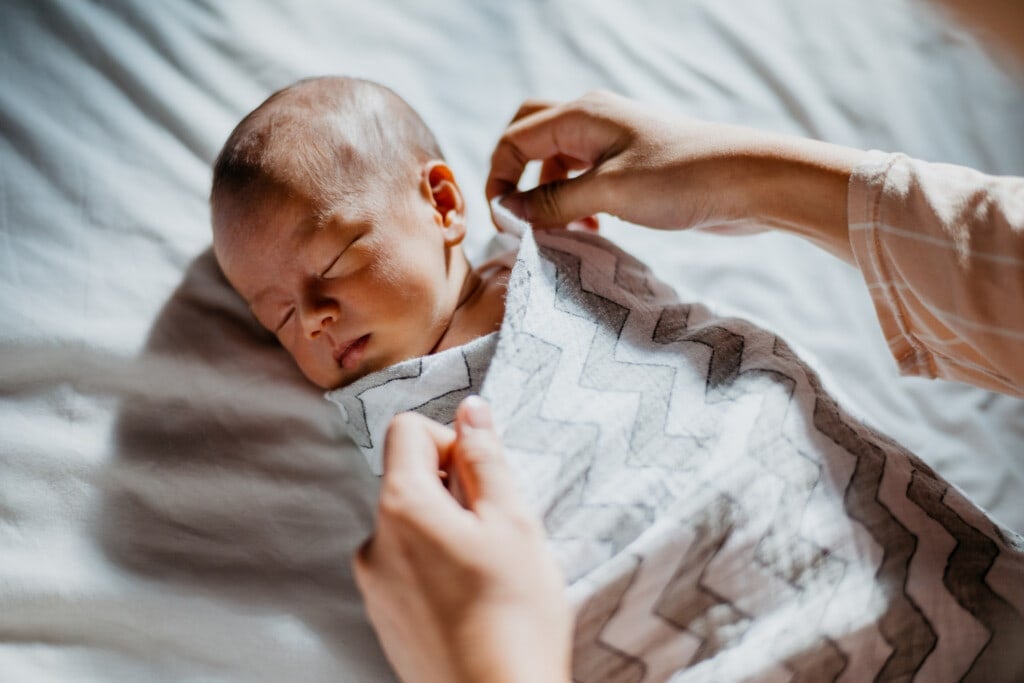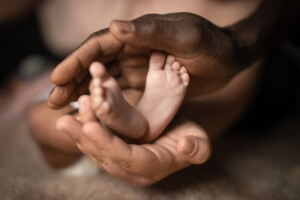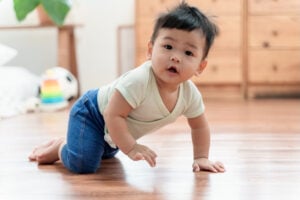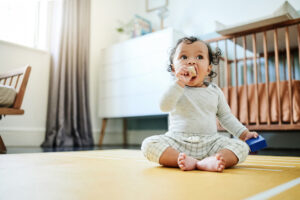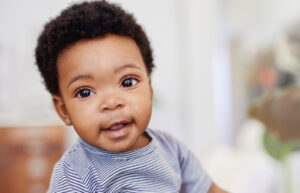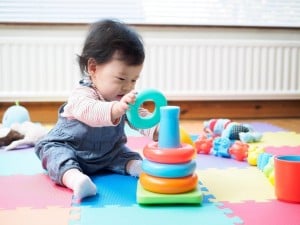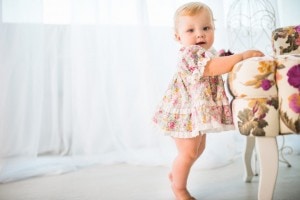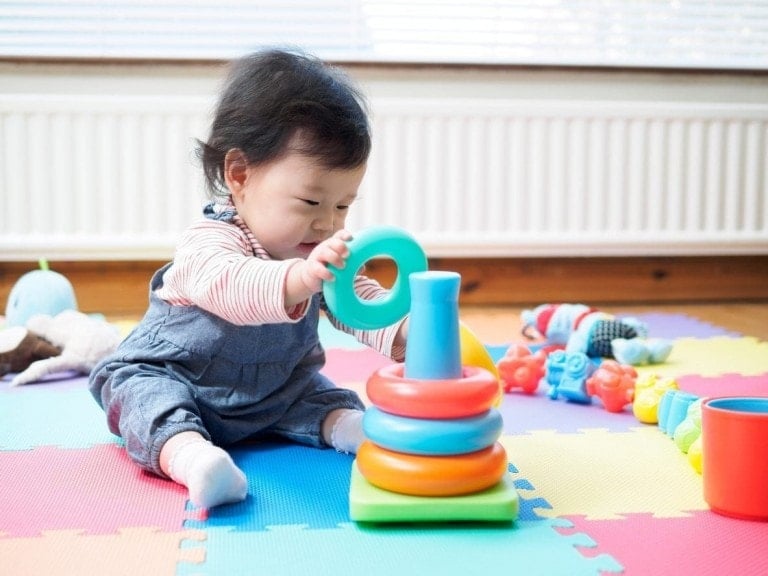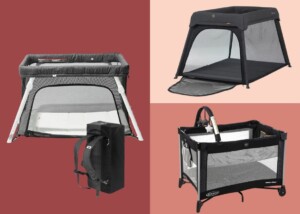Swaddling is a technique that has been used for hundreds of years with newborn babies. If you gave birth in a hospital, you probably witnessed their impressive swaddling techniques or may have even been taught how to wrap your baby correctly using a traditional swaddle blanket.
One of the primary benefits of swaddling is that it keeps babies snug, relaxed, and calm. It replicates familiar feelings that your baby felt in the womb. Swaddling also helps control your baby’s Moro reflex, which often causes babies to wake up when startled. This is one of the reasons that swaddling can help your baby sleep longer stretches both for naps and at night.
Swaddling doesn’t come without risks, and it is essential that you know when and how to swaddle your baby to keep them safe.
When Should I Swaddle?
I recommend swaddling for all naps and night sleep from birth to about 12 weeks. Or until your baby has started showing signs of rolling over. Once your baby starts to roll over, keeping them swaddled increases their risk of SIDS since many babies can get stuck on their bellies. So you will want to immediately begin transitioning them out of the swaddle and into a sleep sack, which is basically like a wearable blanket. You can do this by pulling one arm out for a few nights and then both until you’ve gradually worked them in a sleep sack. Or start using a sleep sack as soon as they start rolling.
How to Safely Swaddle
Swaddling is a bit of an art form. You may never get the swaddle as tight as your nurses did, which is okay! Just make sure your baby’s swaddle is tight enough that they cannot break loose. You should also be able to easily fit two fingers underneath the top of your baby’s swaddle blanket. I recommend using a velcro swaddle since this can help keep your baby tightly wrapped and is more challenging for them to get out of.
If you choose to use a swaddle blanket, you will want to ensure it is a lightweight and breathable material. Follow the steps below for how to swaddle to keep your baby nice and snug!
- Lay your swaddle blanket down in a diamond shape.
- Fold the top corner about ¼ of the way down.
- Place your baby’s head slightly above the top of the fold.
- Fold the right corner of the blanket over your baby, tucking both arms underneath.
- Fold the bottom corner of the diamond up and fold the left side of the blanket over, creating a baby burrito!
According to some sources, swaddling can lead to hip problems later, especially when babies are wrapped too tightly.1 So, it is important that babies still have some room to move their legs when swaddled. It is also recommended that babies remain unswaddled during awake periods. This gives them plenty of time to stretch their limbs and keep them open.
How to Use a Sleep Sack
While sleep sacks can be used from birth as an alternative to swaddling, I recommend introducing one once your baby has started rolling over until about 18 months. Sleep sacks can help keep your baby warm and snug since using a blanket in the first year of life isn’t safe. They also share the same calming effect as swaddles and help babies sleep better for both naps and overnight.
To ensure a sleep sack is safe, you must pay attention to its TOG (thermal resistance). The higher the TOG, the warmer the sleep sack will be based on its material. Most sleep sacks provide their recommendation on the TOG rating based on the temperature of the room as well as your baby’s clothing. Generally, your baby’s sleep environment should always be within 68-72 degrees Fahrenheit. If you notice your baby is sweating or overly warm, their sleep sack is likely too warm or heavy.
Is It Safe to Use Weighted Sleep Sacks?
In recent years, weighted sleep sacks have started to pop up. The claim is that they help babies sleep better by calming their nervous system with the added pressure and the ability to replicate a parent’s touch.
Many parents have found that weighted sleep sacks have helped calm their baby during sleep. However, the AAP does not recommend weighted sleep sacks according to their latest safe sleep recommendations.2 Parents should keep this in mind when deciding to purchase a weighted sleep sack or weighted clothing. If parents choose to use a weighted sleep sack, they should ensure that the weight is distributed evenly and use the correct size for their baby’s age and weight. Parents should speak with their pediatrician if they are concerned.
Swaddles and sleep sacks are a great way to help your baby sleep soundly and provide many additional benefits if used safely. Remember that not all babies like to be swaddled and may reject the swaddle initially. While you want to try a few different techniques and options, you don’t want to force your baby to be swaddled if they prefer not to be.
